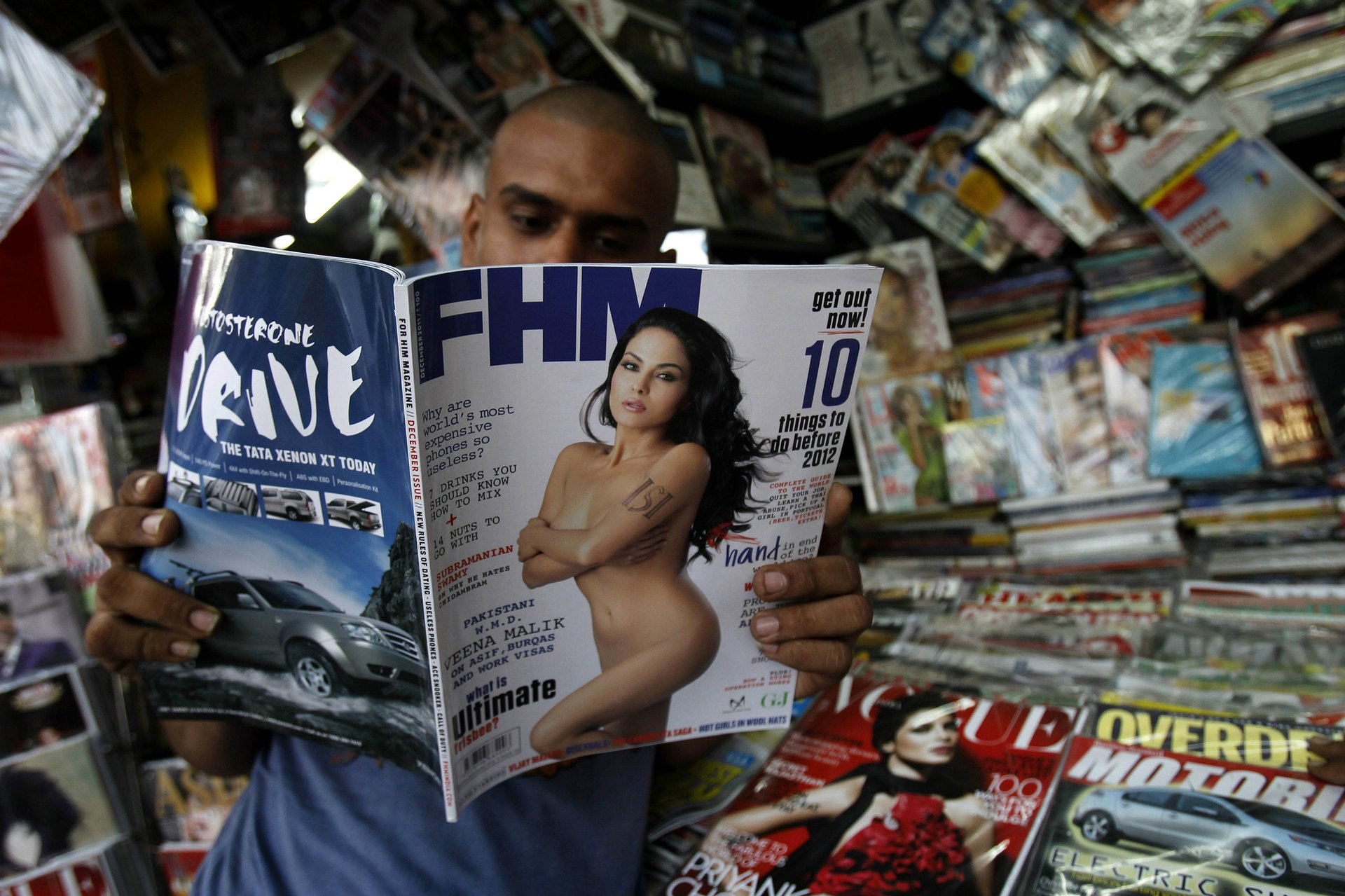The objectification of women is out at magazines—but thriving online
Dozens of magazines with half-naked women once proudly sat in UK magazine racks, in supermarkets and corner shops everywhere. These so-called “lads mags” had a coveted readership—men aged 18-24. They were once so popular they projected nude women onto Big Ben.


Dozens of magazines with half-naked women once proudly sat in UK magazine racks, in supermarkets and corner shops everywhere. These so-called “lads mags” had a coveted readership—men aged 18-24. They were once so popular they projected nude women onto Big Ben.
The original lad mag, the monthly Loaded, first came into the scene in 1994. The founder described it as a “magazine which unashamedly celebrated working-class Britain: football, drinking, sex.” The success of Loaded was quickly followed by a number of magazine similarly characterized by nudity and tongue-in-cheek humor, like FHM, which was selling 700,000 copies a month at its peak in the late 1990s.
The format expanded around the world—in 2000, FHM launched a US edition, joining editions in Australia, Singapore, Malaysia, Turkey, and France, where each was the number one magazine in terms of circulation and advertising sales. These magazines did so well that the format went weekly with Nuts and Zoo in 2004; Zoo’s circulation peaked at more than 260,000 the following year.
Yet within a decade, all the titles most synonymous with the lad-mag boom have ceased publication. Nuts, Loaded, and Arena have all closed. Maxim shut down in 2009. FHM USA shut down in 2006 (paywall). Maxim USA’s rebrand under the leadership of Kate Lanphear, the former style director at both T: The New York Times Style Magazine and Elle, failed (paywall). And now Bauer Media has announced it will suspend publication of both FHM and Zoo; Zoo had gone from selling 200,000 copies a month in 2005 to 24,000 copies earlier this year.
But does the demise of lad mags signal an end to lad culture? And have young men in Britain and elsewhere finally seen the error of the ways, choosing to reject the sexual objectification of women? Not exactly.
While it’s tempting to attribute the decline of lads mags to a feminist awakening in young men, there may be a more compelling reason as to why sales plummeted. Men may have just moved onto a plethora of sites offering the exact same type of content online. As a former writer who worked for FHM and Zoo recently said:
The business move was described as less a response to us living in a more enlightened time in terms of sex and gender discussion, but instead a realigning of their business models to the new “viral” news model that better works in the age of social media.
King among them is the social-media phenomenon called the Lad Bible.
First launched in 2012, the Lad Bible now boasts over 10 million Facebook likes and 1.5 million followers on Twitter. Mimi Turner, Lad Bible’s marketing director, says that half of all British men between 18 and 24 read the Lad Bible. ”Far from being dead, the content young men really like, engage with, and trust is probably on a bigger scale than it’s ever been,” she tells Quartz.
The Lad Bible claims to reach 150 million people a week through Facebook alone. Web analytics site Alexa reports Lad Bible is the 12th most popular website in the UK. It is only one of two British companies in the top 12; the other is the BBC. Turner says that while ”young men are always going to want to see exciting pictures of beautiful women,” Lad Bible wants “women to feel happy about those pictures as well.”
Turner claims that 20% of 18 and 24 women follow the Lad Bible, suggesting their content “spans the gender divide.” But it’s popularity is clearly not universal with all women. Laura Bates, of the advocacy campaign Everyday Sexism, suggests the site, and many like it, promote “a culture of misogyny sickeningly disguised as ‘banter’.”
But in our porn-filled world, these lad mags look somewhat innocent. As Martin Daubney, who was features editor on FHM during its heyday from 1997-99, says:
…The anti-lad mag campaigners are deluded if they feel this represents some hollow victory against ‘lad culture’, which migrated online some time ago, where it has the potential to be much more toxic and misogynistic. It is my prediction that, in time, the campaigners who despised the lad mags’ lifeblood will look back on these magazines as a period of relative innocence, that they would welcome back in a heartbeat.